Affiliate links on Android Authority may earn us a commission. Learn more.
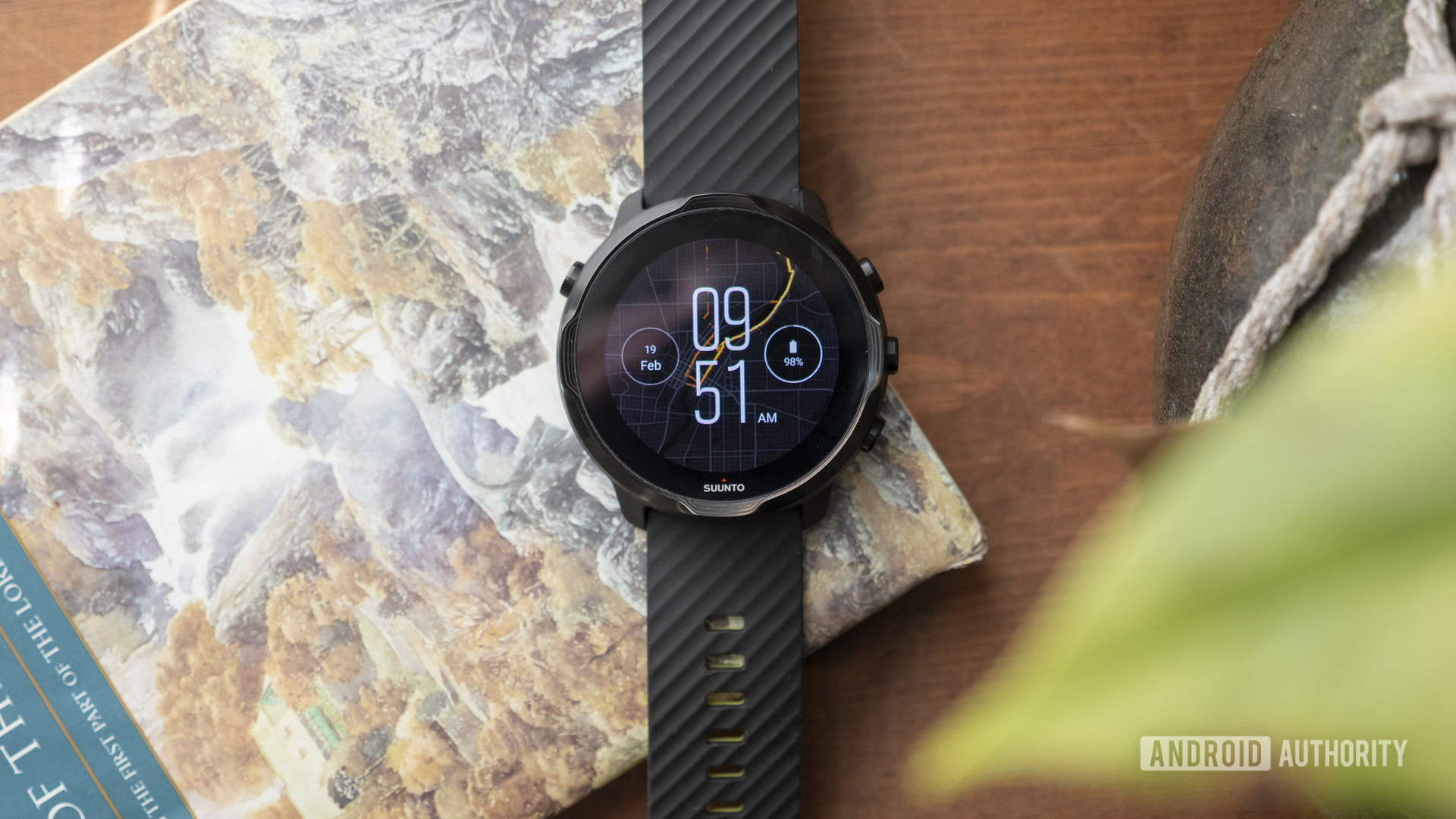
Suunto 7
What we like
What we don't like
Suunto 7
Suunto doesn’t have as much clout in the GPS watch space as it used to. Garmin remains the go-to for outdoor fitness watches for most people, while Apple, Samsung, and Fitbit have been surpassing the Finnish company in the smartwatch realm. The Suunto 7 is a bit of an anomaly in the company’s range. Launched in 2020, it was its attempt to appeal to outdoorsy users and those who still want a good smartwatch. Did it succeed? It’s kind of a mixed bag, but I do like a lot about the Suunto 7. This is our full review.
Update, April 2023: We have updated our Suunto 7 review with new pricing details, software and feature updates, new competition, and more.
Top-notch hardware and design
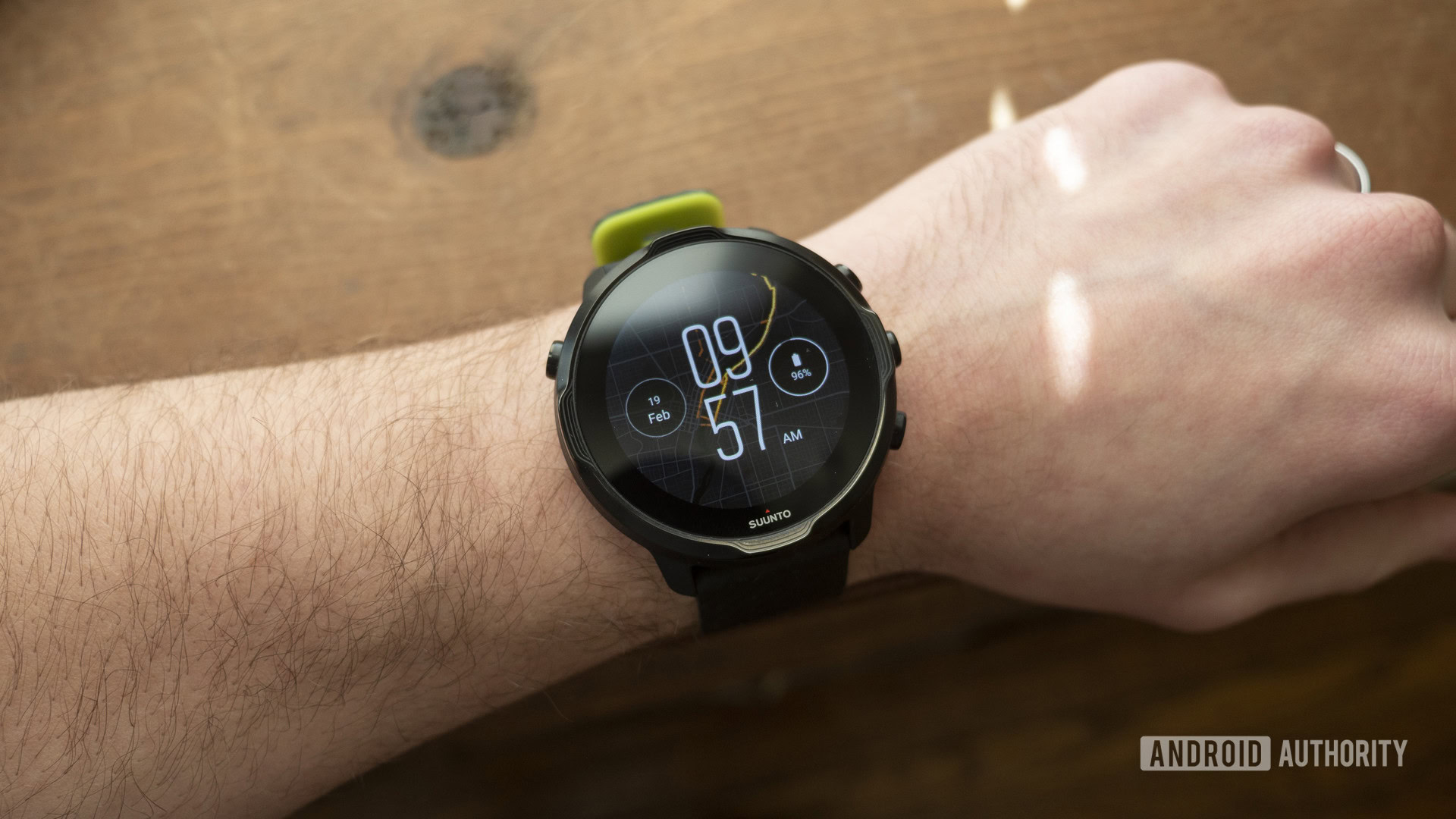
- 1.39-inch AMOLED display
- 454 x 454 pixels, 1,000 nits
- 50mm case
- 24mm quick release straps
- 70g
- 5ATM water and dust resistance
- Glass fibre reinforced polyamide casing
- Stainless steel bezel
- 1GB of RAM
- 4.5GB of user-accessible storage
- NFC
- Wi-Fi only (no LTE)
Even in 2022, the Suunto 7 looks more like a GPS sports watch than it does any other Wear OS watch, even including the Galaxy Watch 4 Classic. It’s big — maybe too big for a lot of people. The 50mm case is pretty much the max I’d go for my average-sized wrists. Luckily it’s relatively light at 70g.
The whole thing feels really high quality, though. The polyamide material that makes up the case feels sturdy and comfortable, and the side buttons are clicky and easy to find. And that strap, oh man, that strap. It’s great. It didn’t get caught on my clothes, and I quite like the texture on the outside. My one complaint is that the strap loop moves around the watch strap a little more than I’d like it to.
There are four buttons around the watch case. The top-left is the home/all apps button, the top-right is the non-programmable Suunto app button, and the other two are both programmable. Wear OS really benefits from a rotatable crown, but unfortunately, there isn’t one on the Suunto 7.
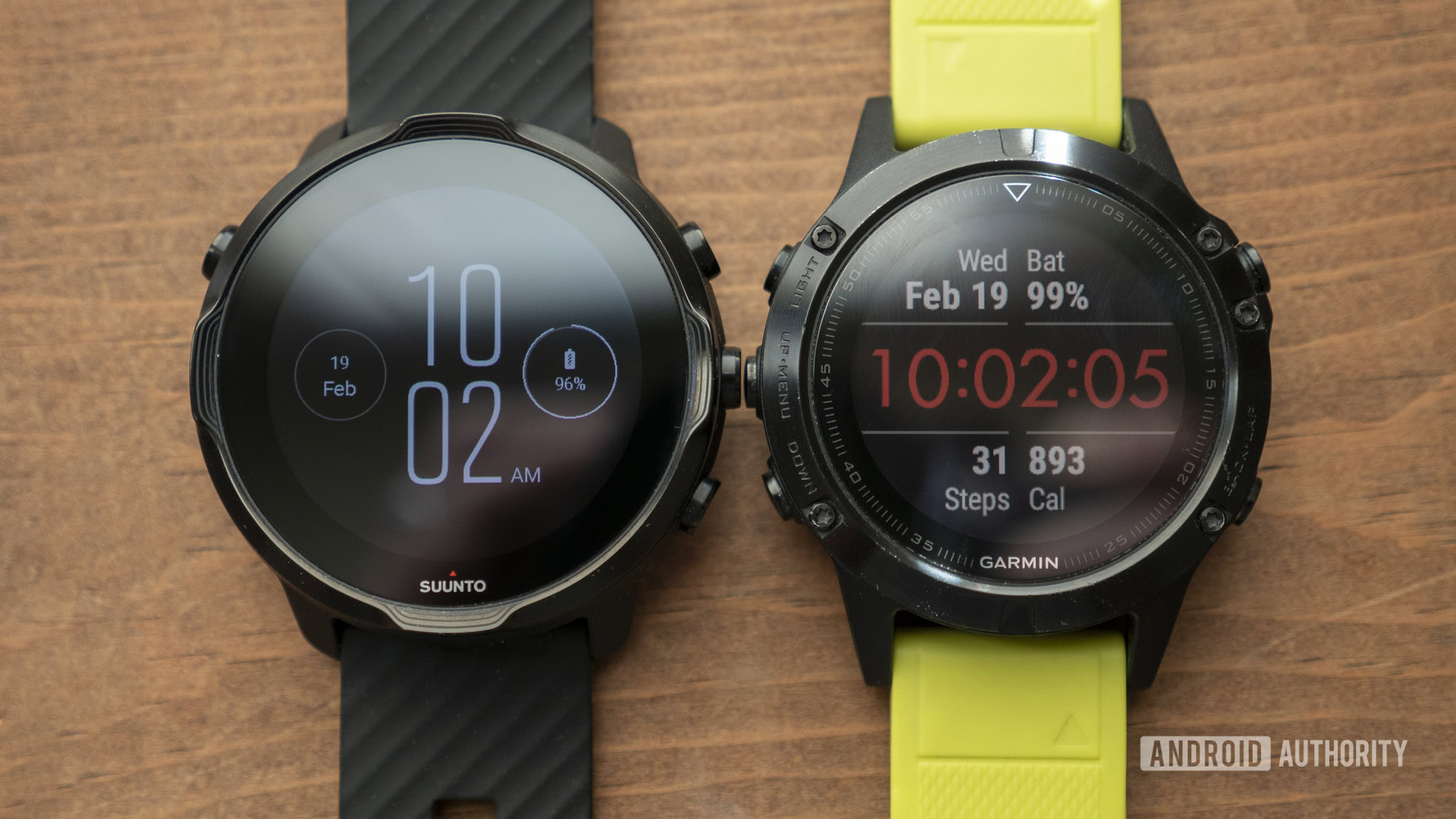
The watch is this big for two reasons: for the display and battery. The 1.39-inch AMOLED display is fantastic. Colors are great, and the size makes it easy to read notifications.
Suunto surprised us a little at CES 2020 when it claimed two-day battery life for the Suunto 7 — not a small feat for an older Wear OS watch. But I’m happy to say the claims are legitimate. I often got a solid two days out of the Suunto 7, even when wearing it to bed and recording an exercise at the gym during the evening. I usually went to bed on the first night with about 65% left in the tank. That’s more than can be said for newer Wear OS devices. These numbers are for “normal” smartwatch use: receiving notifications, using Google Pay, tracking workouts, etc. If you’re running the GPS continuously, battery life drops down to 12 hours.
All-day battery life and quick performance — Suunto nailed the hardware with the Suunto 7.
Notably, Suunto is actually the first Wear OS watchmaker to utilize the Qualcomm Snapdragon 3100’s power-saving sports mode. You can read more about that here, and see Suunto’s Mikko Ahlstrom explain the feature to Android Authority during an interview at CES. Speaking of that Qualcomm processor, performance is good. It’s the same ol’ story as all other legacy Wear OS watches: Google Assistant hiccups from time to time and the setup process is a little laggy. Everything else is smooth sailing.
Suunto has been making watches for a long time, so I’m not surprised the hardware and build is top notch.
Fitness and health tracking
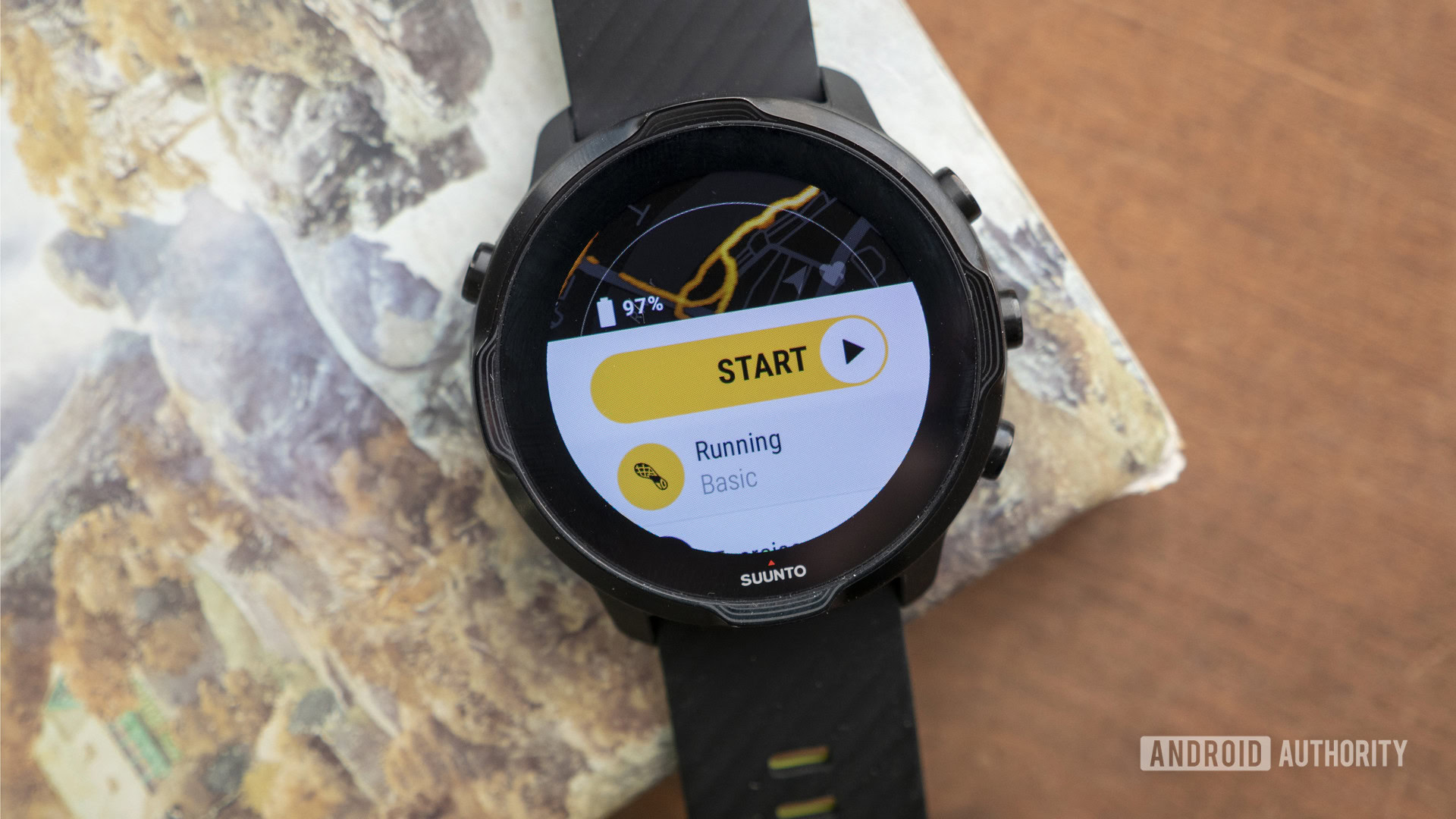
The Suunto 7 is in the same ballpark as other mid-range multisport watches of its era, and can even hold its own against newer products. It has built-in GPS (with GLONASS, QZSS, and Beidou), an optical heart rate sensor, and a barometric altimeter. It can track over 70 sport modes, including running (outdoor, interval, race, trail, and more), hiking, pool and open water swimming, and many other niche activities. There’s a catch-all “unspecified activity” for outdoor and indoor sports, too. There’s no triathlon mode here though, likely because the battery wouldn’t be able to last that long.
The Suunto 7 excels during outdoor activities. That’s because it supports offline outdoor maps, so you can still see where you’re going even if you can’t get a connection. They’re pretty detailed too, with terrain info, trails, and contour lines if you’re using these maps for hiking or trail running. Just open the Suunto smartwatch app, click offline maps, and select which 40-mile area you’d like to download. These offline maps automatically update when the 7 is charging and connected to Wi-Fi, so you always should be up to date. This makes the Suunto 7 one of the best devices for day adventuring.
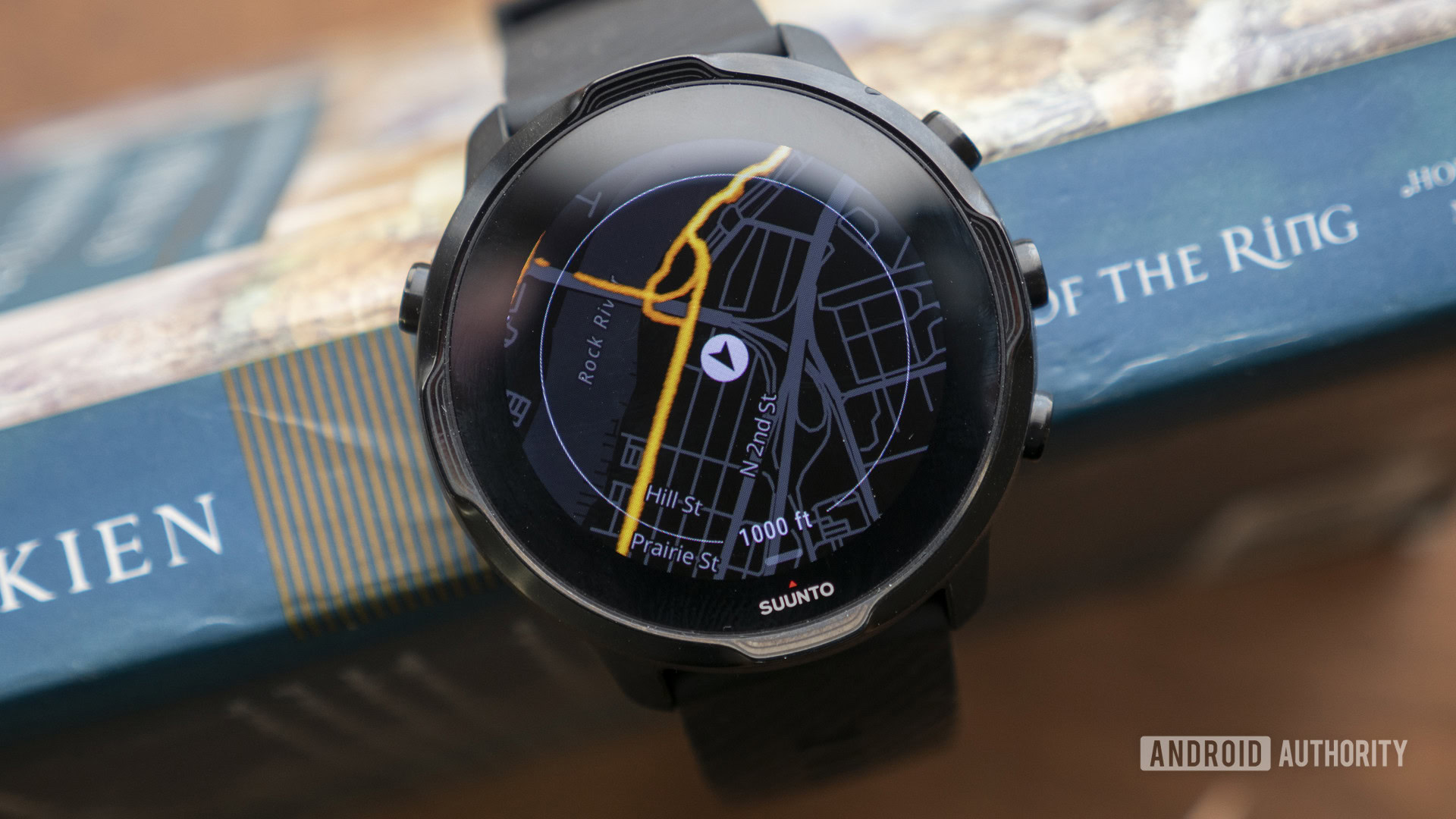
If this is your first experience with a Suunto watch, boy are you in for a treat with Heatmaps. Suunto Heatmaps show heavily traveled areas frequented by other Suunto users. The maps look really nice — they all have a dark background, with orange and yellow accents designating the most popular running paths.
See the image above. The bright yellow path is a popular running route near my house, and the darker orange lines are paths taken semi-frequently. This might not be all that useful for a residential area in my case, but you could see the benefit if you’re going trail running or hiking. The goal is to stay safe, so Heatmaps make it pretty easy to stick to well-traveled paths. Also, colors change depending on which activity you choose.
These Heatmaps are available for 15 total activities, including running, swimming, and hiking. Heatmaps are available during exercises, but Suunto also included an awesome Heatmaps watch face for the Suunto 7 that auto-updates based on your location. It’s literally one of my favorite watch faces I’ve ever used. You can zoom out or in on your current location and set it to any one of the 15 Heatmaps you like.
I found the Suunto 7’s GPS to be quite accurate, at least compared to my Garmin Forerunner 245 Music and Fenix 5. On a long outdoor walk, all three of these devices were able to stick to my path pretty accurately, even when I went under a bridge.
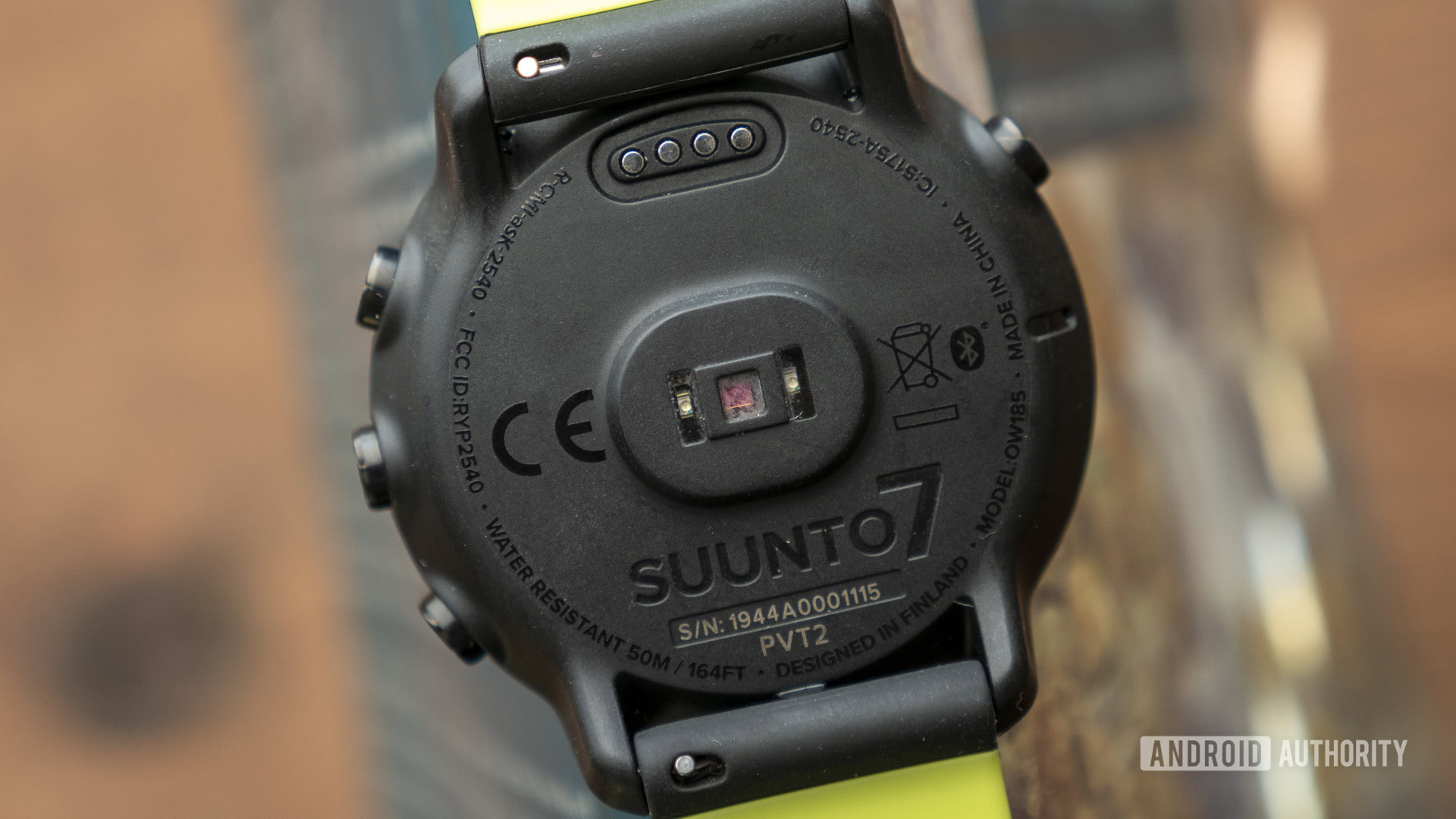
Unlike other Suunto watches, the Suunto 7 isn’t compatible with external heart rate sensors. Considering most other Suunto watches are, it’s unfortunate the Suunto 7 is left out. Suunto knows this is important to certain users. The company said it’s able to add this feature with a software update if need be, so it all depends on how people react to the omission this time around.
To test the onboard heart rate sensor, I went on a four-mile treadmill run wearing the Suunto 7, Garmin Forerunner 245 Music, and Wahoo Tickr X chest strap.
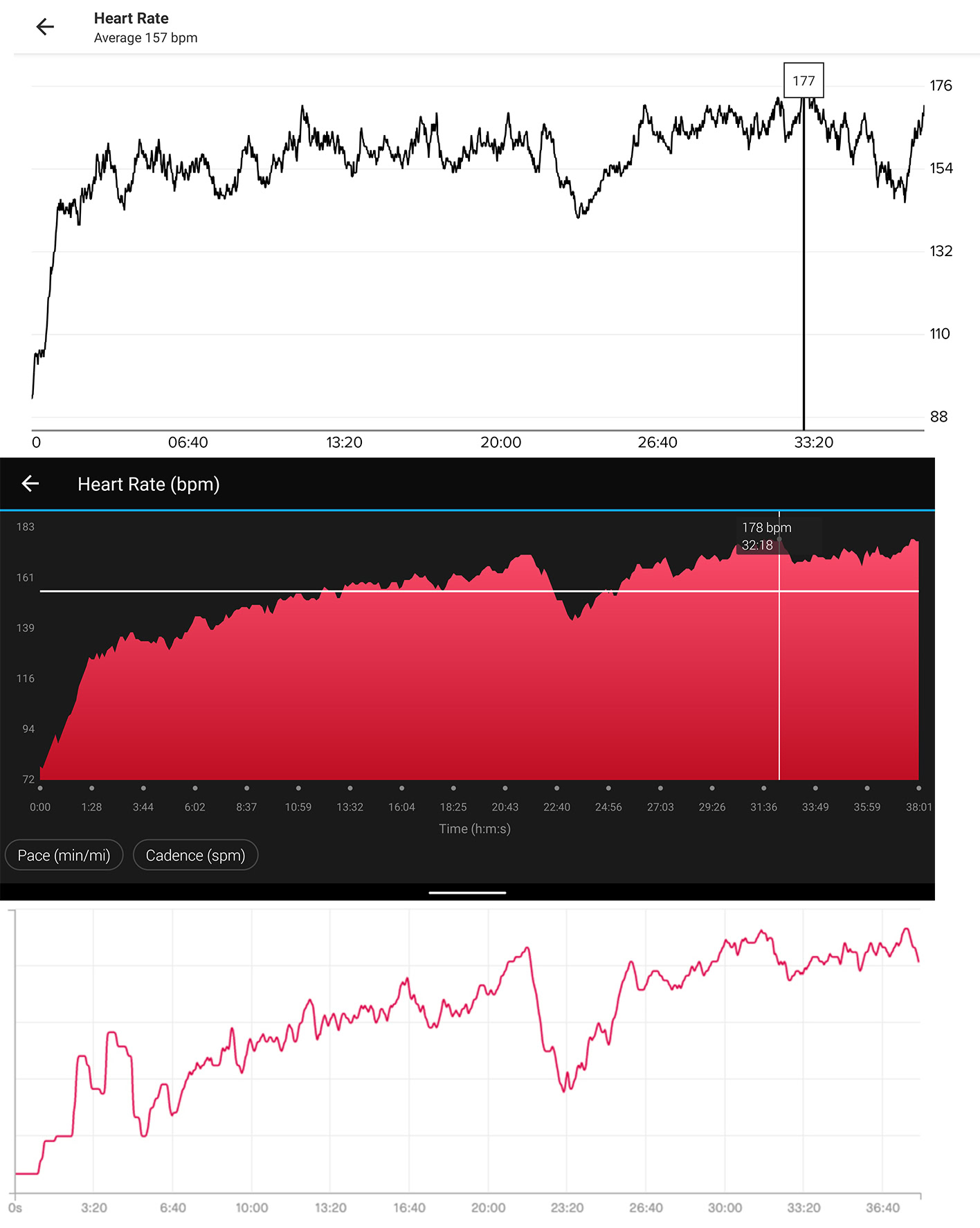
I came away impressed with the Suunto 7 heart rate sensor. All three of the devices were quick to pick up on trends throughout my treadmill run. In fact, I think the Suunto 7 performed better than the Forerunner 245 during the first six minutes or so. It was able to pick up on the slight dip at around the five-minute mark, while the Forerunner didn’t.
All three devices picked up on the drop down to ~140bpm at 23 minutes, and all three rose up again a few minutes later. I was a bit concerned about the HR sensor accuracy when I learned that Suunto was going with a different supplier for the Suunto 7, but those concerns have been laid to rest.
My Suunto 7 review unit is a final retail model, though I did run into one issue with the heart rate sensor during my testing. I went for a run with the watch on the day it arrived, and the heart rate sensor just didn’t record anything. (And yes, I turned it on in the Google Fit settings beforehand.) A simple soft reboot fixed the issue, but I’m still not sure what was going on there. I’ve let Suunto know about the issue.
And finally, sleep tracking. Suunto added native sleep tracking to the device and the Suunto app in 2021, which means there’s no need to install a third-party app.
The Suunto app, and some frustrations
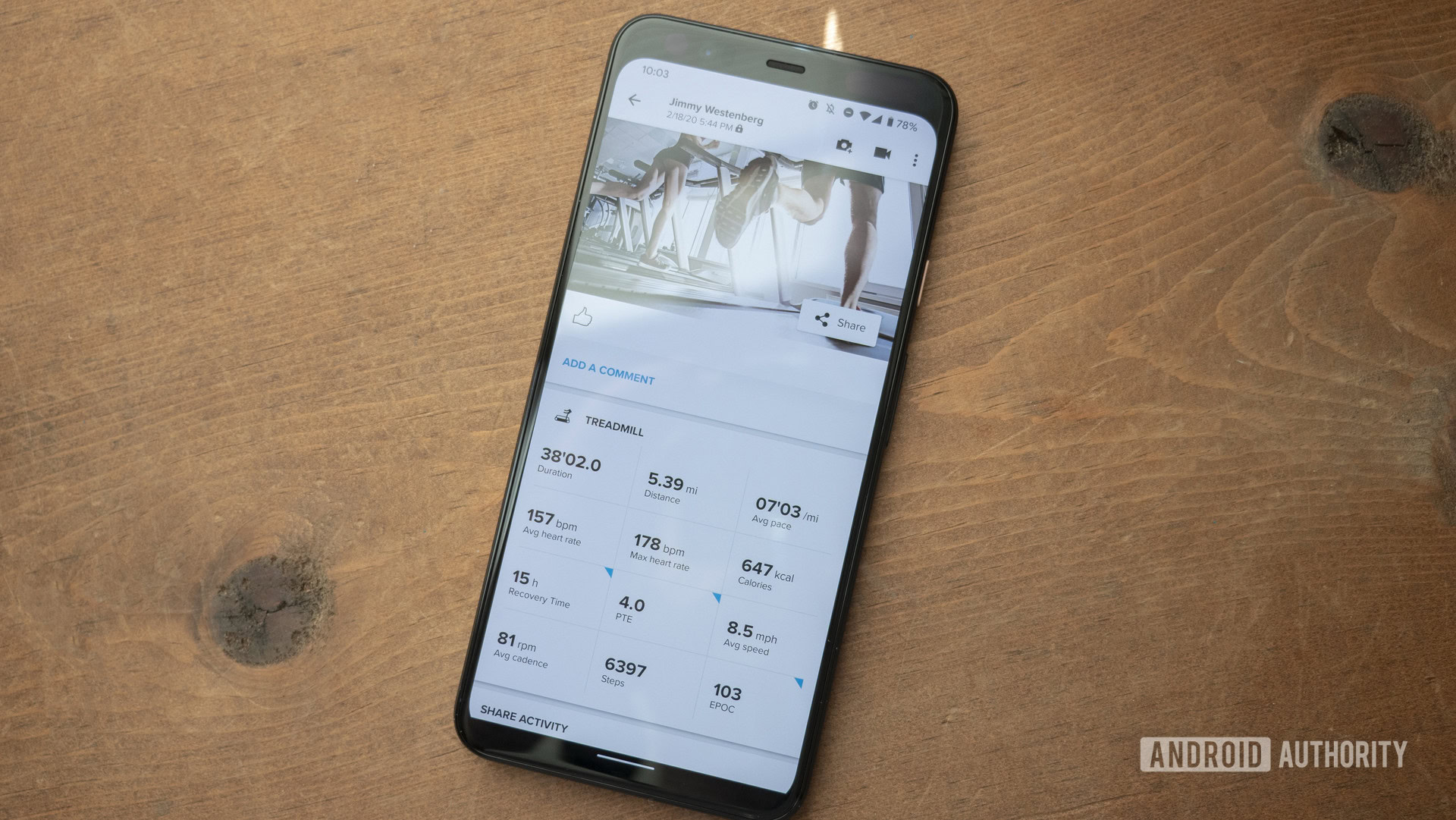
Let’s first talk about the elephant in the room. The Suunto 7 launched with and still runs on Wear OS 2, not Wear OS 3, as the likes of the Pixel Watch, Galaxy Watch 5, and Fossil Gen 6 now flaunt. As we’ve seen with some devices, this isn’t necessarily a bad thing. Wear OS 2 still has access to Assistant and other smart features, while the Sunnto 7 proves that it makes for a competent adventure watch platform despite its age.
There’s no word on if the Suunto 7 will receive an update to Wear OS 3, but considering Suunto would need to create a new smartwatch app for its only Wear OS device, it might not be worth it to the firm.
Speaking of smartwatch apps, the Suunto smartwatch app remains a highlight. Click the top-right button to launch it. You’ll see a map of your current location (or a Heatmap if you so choose), a “start activity” slider, exercise and map options, and more. It’s well designed and easy to navigate, and definitely made me feel like I was using a more traditional GPS fitness watch.
At launch, you needed two fitness apps to use the Suunto 7 effectively: Google Fit and the Suunto app. The latter recorded workouts, while the former kept track of daily activity metrics, like steps, calories, and sleep. Thankfully, this is no longer the case. You can still choose to use Google Fit to track daily metrics, but the Suunto app can now keep tabs on those stats too. It makes more sense to use a single app in this instance instead of fragmenting fitness data across multiple platforms. Notably, you could still view daily activity details on the Suunto 7 itself. These changes largely only affect the Suunto app itself.
As the Suunto 7 runs Wear OS, you can also install the likes of Strava, Endomondo, or another fitness app of your choosing to track workouts and more.
When you do use the Suunto smartphone app, it’s a great experience. It’s easy to use and you don’t need to go digging for things like you sometimes do with Garmin’s app. It of course features Suunto’s Heatmaps and lets you import or create new running or hiking routes right in the app.
Value and the competition

It’s awkward recommending alternatives for the Suunto 7 in 2023. The watch is now three years old, running older software. It remains Suunto’s only Wear OS watch, and can be bought from Amazon and Suunto.com for $399 in five color options: All Black, Black Lime (our review unit), Graphite Copper, Sandstone Rose Gold, and White Burgundy. That is a $100 drop from its launch price, but it remains pricey compared to the current competition.
This is very much a Garmin Venu 2 ($355 at Amazon) and Vivoactive 4 ($234.75 at Amazon) competitor, and those devices are regularly on sale for $300. Realistically, I’d choose the Garmin alternative every time if it’s between the Suunto 7 and the Venu range.
As for competing Wear OS watches, the Samsung Galaxy Watch 5 ($162.57 at Amazon) runs on Wear OS 3, packs a host of exclusive fitness and health features, and comes with the promise of long-term software support. It’s also much cheaper, making it the obvious choice. If you want a more rugged appearance and better battery life, the Galaxy Watch 5 Pro ($374 at Amazon) is arguably the truer competitor of the Suunto 7.
Suunto 7 review: The verdict
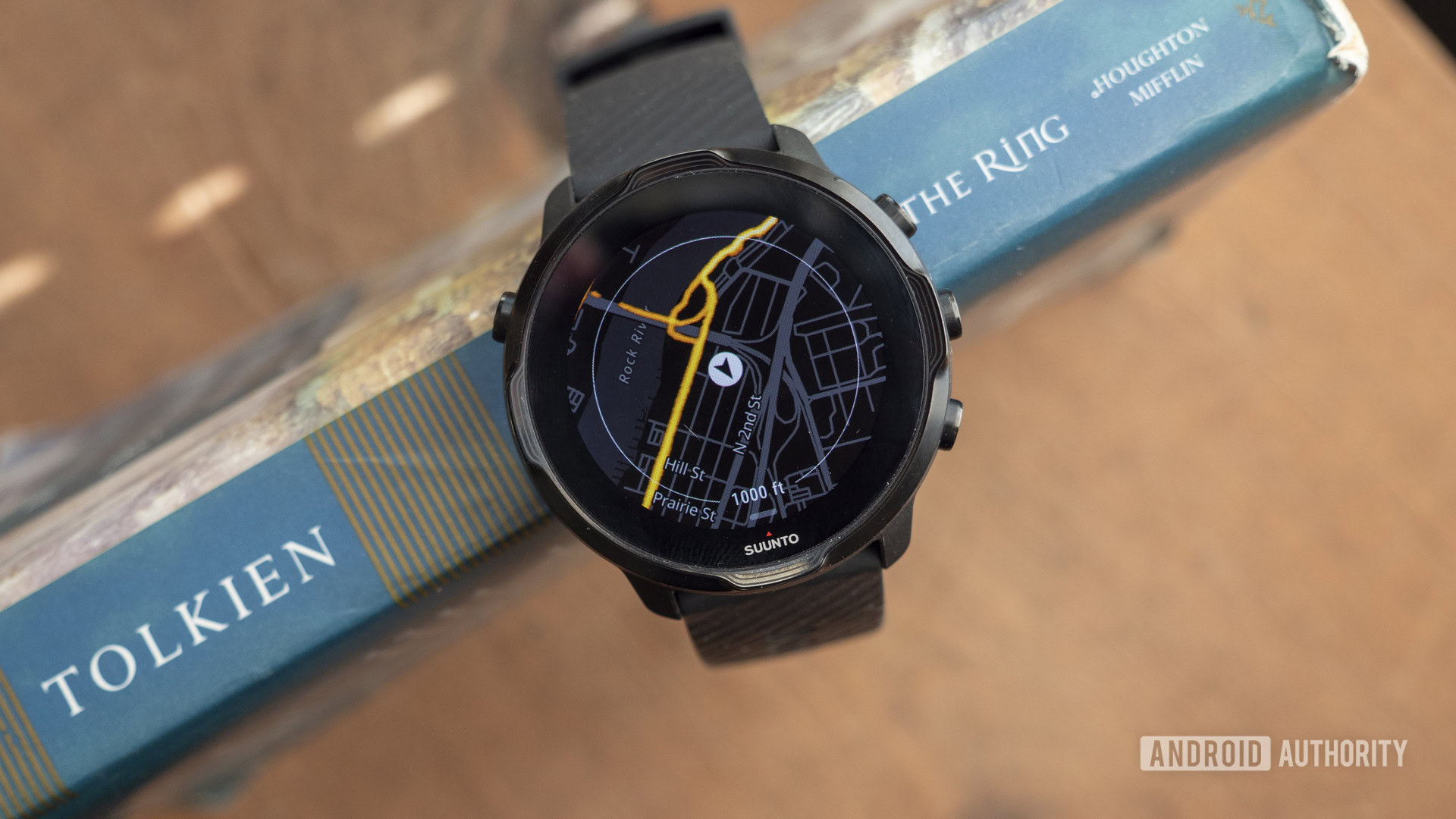
The Suunto 7 is a tough sell. It has its positives, from its excellent build quality, great workout features, and solid companion app, but it lacks a host of features compared to its contemporaries. This problem is even more glaring considering its price.
Sure, if you’ve got the cash and none of those negatives turn you away, I think you’ll be really happy with the Suunto 7. I know I am, but I also never use a heart rate sensor chest strap outside of reviewing devices, and I like certain Wear OS features. That said, the Suunto 7 likely won’t see an upgrade to Wear OS 3, so what you see is likely what you’ll get in the future. Considering this, and its rivals’ relatively forgiving pricing structures, you’ll probably be better served by a multisport smartwatch or a more feature-full Wear OS 3 device.
You'll have to make some sacrifices if you want the best of both worlds. The best of both worlds doesn't exist right now.
Outside of the Apple Watch, no one has nailed the fitness watch-smartwatch combo quite yet. If you can find it at a cut price and don’t mind its flaws, the Suunto 7 may be worth a look.